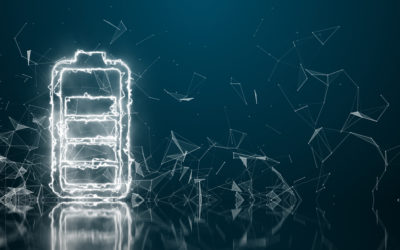[ad_1]
Electric car batteries could be damaged from commercial fast-charging stations which subject them to high temperatures and high resistance, potentially causing them to crack, leak and lose storage capacity.
Engineers at the University of California, Riverside are developing a method to remedy the problem by charging at lower temperatures, which has shown to lower the risk of catastrophic damage and loss of storage capacity.
The researchers charged one set of discharged Panasonic NCR 18650B cylindrical lithium-ion batteries, such as those found in Tesla cars, using the same industry fast-charging method as the fast chargers typically found along US freeways.
They also charged a set of batteries using a new fast-charging algorithm based on the battery’s internal resistance, which interferes with the flow of electrons.
The internal resistance of a battery fluctuates according to temperature, charge state, battery age, and other factors. High internal resistance can cause problems during charging.
The new charging method uses an adaptive system that learns from the battery by checking its internal resistance during charging. It rests when internal resistance kicks in to eliminate loss of charge capacity.
For the first 13 charging cycles, the battery storage capacities for both charging techniques remained similar. After that, however, the industry fast-charging technique caused capacity to fade much faster: after 40 charging cycles, the batteries retained only 60 per cent of their storage capacity.
Batteries charged using the internal resistance charging method retained more than 80 per cent capacity after the 40th cycle.
At 80 per cent capacity, rechargeable lithium-ion batteries have reached the end of their useful life for most purposes. Batteries charged using the industry fast-charging method reached this point after 25 charging cycles, while internal resistance method batteries were good for 36 cycles.
“Industrial fast-charging affects the lifespan of lithium-ion batteries adversely because of the increase in the internal resistance of the batteries, which in turn results in heat generation,” co-author Tanner Zerrin said.
Worse, after 60 charging cycles, the industry method battery cases cracked, exposing the electrodes and electrolyte to air and increasing the risk of fire or explosion. High temperatures of 60°C accelerated both the damage and the risk.
“Capacity loss, internal chemical and mechanical damage and the high heat for each battery are major safety concerns, especially considering there are 7,104 lithium-ion batteries in a Tesla Model S and 4,416 in a Tesla Model 3,” Mihri Ozkan said.
Internal resistance charging resulted in much lower temperatures and no damage.
“Our alternative adaptive fast-charging algorithm reduced capacity fade and eliminated fractures and changes in composition in the commercial battery cells,” said engineer Cengiz Ozkan.
The researchers have applied for a patent on the adaptive internal resistance fast-charging algorithm that could be licensed by battery and car manufacturers.
In the meantime, the team recommends that electric vehicle owners minimise the use of commercial fast chargers, recharging before the battery is completely drained and preventing overcharging.
On Wednesday, the UK government announced a £1bn investment in green transport, including £500m to support the rollout of rapid charging hubs to ensure that drivers of EVs are never more than 30 miles from a charging point.
Sign up to the E&T News e-mail to get great stories like this delivered to your inbox every day.
[ad_2]
Source link
2020-03-13 16:44:12
E&T editorial staff
[author_name]:author name
https://eandt.theiet.org/content/articles/2020/03/electric-vehicle-fast-chargers-shown-to-damage-internal-batteries/
https://eandt.theiet.org/content/articles/2020/03/electric-vehicle-fast-chargers-shown-to-damage-internal-batteries/
eandt.theiet.org





0 Comments